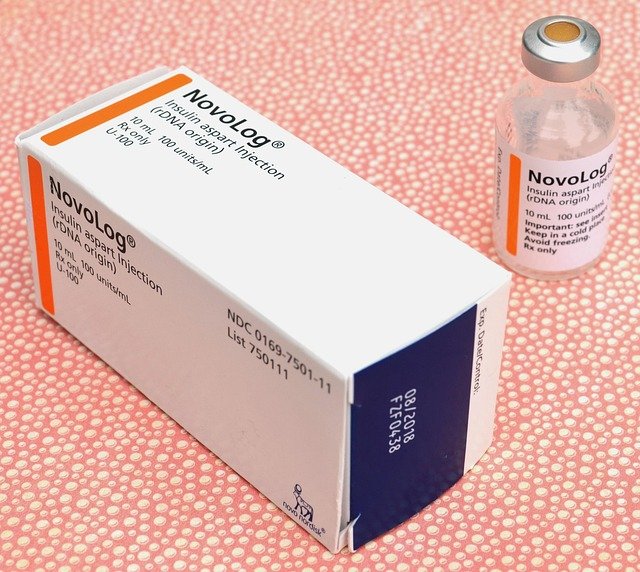Navigating Narcolepsy: Current Treatments and Breakthroughs## Understanding NarcolepsyBefore delving into treatment, it’s important to understand narcolepsy itself. There are two main types:Narcolepsy Type 1 (Narcolepsy with cataplexy): Characteri
Narcolepsy is a chronic neurological disorder that affects the brain's ability to regulate sleep-wake cycles. It can lead to excessive daytime sleepiness, cataplexy, sleep paralysis, and hallucinations. Proper diagnosis and treatment are crucial to managing symptoms and improving the quality of life for those affected. This article provides an in-depth look at current treatment options for narcolepsy.

What are the two main types of narcolepsy?
Before delving into treatment options, it’s essential to understand the two primary types of narcolepsy:
-
Narcolepsy Type 1 (Narcolepsy with cataplexy): Characterized by excessive daytime sleepiness and sudden loss of muscle tone triggered by strong emotions (cataplexy). This type is associated with low levels of hypocretin, a brain chemical that regulates wakefulness.
-
Narcolepsy Type 2 (Narcolepsy without cataplexy): Marked by excessive daytime sleepiness but without cataplexy. Hypocretin levels are typically normal in this type.
Understanding the specific type of narcolepsy is crucial for tailoring an effective treatment plan.
How is narcolepsy diagnosed?
Diagnosing narcolepsy can be challenging, as its symptoms often overlap with other sleep disorders. The diagnosis process typically involves:
-
Medical history evaluation and physical examination
-
Sleep diary and questionnaires
-
Polysomnography (overnight sleep study)
-
Multiple Sleep Latency Test (MSLT)
-
Hypocretin level measurement (via lumbar puncture)
These tests help healthcare professionals rule out other conditions and confirm the presence of narcolepsy. Early and accurate diagnosis is key to initiating appropriate treatment and improving the patient’s quality of life.
What medications are commonly used to treat narcolepsy?
Several medications are approved for narcolepsy treatment, targeting different symptoms:
-
Stimulants: Modafinil, armodafinil, and methylphenidate help combat excessive daytime sleepiness.
-
Sodium oxybate: This medication improves nighttime sleep quality and reduces cataplexy.
-
Antidepressants: Selective serotonin reuptake inhibitors (SSRIs) or serotonin-norepinephrine reuptake inhibitors (SNRIs) may help manage cataplexy.
-
Pitolisant: A histamine H3 receptor antagonist that promotes wakefulness.
-
Solriamfetol: A dopamine and norepinephrine reuptake inhibitor that enhances wakefulness.
The choice of medication depends on the individual’s symptoms, overall health, and potential side effects. A healthcare provider will work closely with the patient to find the most effective treatment regimen.
What lifestyle changes can help manage narcolepsy symptoms?
While medication plays a crucial role in narcolepsy treatment, lifestyle modifications can significantly improve symptom management:
-
Maintaining a consistent sleep schedule
-
Taking short, scheduled naps throughout the day
-
Avoiding alcohol and caffeine, especially before bedtime
-
Regular exercise, but not too close to bedtime
-
Stress management techniques, such as meditation or yoga
-
Informing family, friends, and colleagues about the condition for better support
These lifestyle adjustments, combined with proper medication, can help individuals with narcolepsy lead more fulfilling and productive lives.
Are there any alternative or complementary therapies for narcolepsy?
While traditional medications remain the cornerstone of narcolepsy treatment, some individuals explore alternative or complementary therapies to manage their symptoms. These may include:
-
Cognitive Behavioral Therapy (CBT): Helps manage stress and improve sleep habits
-
Light therapy: Exposure to bright light at specific times may help regulate the sleep-wake cycle
-
Acupuncture: Some patients report improved sleep quality and reduced daytime sleepiness
-
Herbal supplements: Certain herbs like ginkgo biloba or St. John’s Wort may help with alertness (consult a healthcare provider before use)
-
Mindfulness and meditation: Can help manage stress and improve overall well-being
It’s important to note that while these therapies may provide some benefits, they should not replace prescribed medications or medical advice. Always consult with a healthcare professional before incorporating alternative treatments into your narcolepsy management plan.
What are the latest breakthroughs in narcolepsy research and treatment?
Recent years have seen exciting developments in narcolepsy research and treatment options:
-
Gene therapy: Researchers are exploring ways to restore hypocretin production in the brain using gene therapy techniques.
-
Hypocretin agonists: New drugs that mimic the action of hypocretin are in development, potentially offering more targeted treatment for narcolepsy type 1.
-
Immunotherapy: As narcolepsy type 1 is believed to have an autoimmune component, researchers are investigating immunomodulatory treatments to prevent or slow the destruction of hypocretin-producing neurons.
-
Orexin receptor agonists: These compounds aim to stimulate the orexin (hypocretin) system, potentially improving wakefulness and reducing other narcolepsy symptoms.
-
Precision medicine approaches: Tailoring treatments based on an individual’s genetic profile and specific symptoms may lead to more effective and personalized narcolepsy management.
While many of these approaches are still in the research phase, they offer hope for more effective treatments in the future. As our understanding of narcolepsy continues to grow, so does the potential for improved management strategies and, ultimately, a better quality of life for those affected by this challenging disorder.
This article is for informational purposes only and should not be considered medical advice. Please consult a qualified healthcare professional for personalized guidance and treatment.




